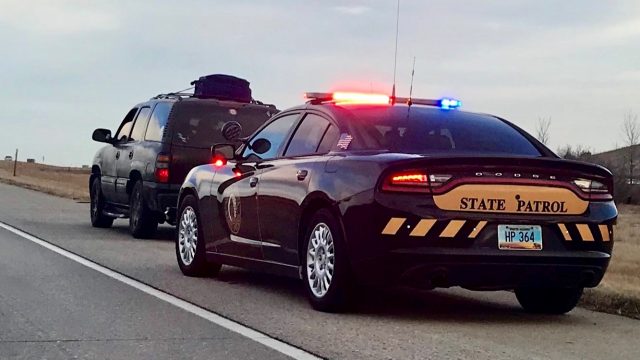ND Highway Patrol Says Black Patrol Cars Are Safer, but That Doesn’t Make Sense

The North Dakota Highway Patrol announced this week that the’d be transitioning their fleet of patrol vehicles from being predominantly white to predominantly black.
Not particularly noteworthy news, except when you consider their justification for doing so.
“Black vehicles will enhance the safety of the motoring public as well our officers, because they are easier to see during white-out conditions,” NDHP Colonel Mike Gerhart said in a press release announcing the change (see below).
That doesn’t make any sense.
Black is almost certainly more visible in whiteout conditions, when they occur, but you know what occurs a lot more often than whiteouts? Darkness. Happens every day when the sun goes down. And you know what’ more visible at night?
White.
At best, a given vehicle’s color has little impact on safety. Not that you have to take my word for it. That’s per the insurance industry, which has a pretty significant financial interest in understanding vehicle safety. If a vehicle’s color impacted safety, the insurance industry would take that into account for premiums:
The issue of car color is so off the radar that experts rarely bother to research it. The Insurance Institute for Highway Safety doesn’t have any research findings related to car color, reports spokesperson Russ Rader. “A brighter color could make a vehicle more visible to other drivers, but the effect is likely small,” Rader says. “For example, daytime running lights have been shown to reduce crashes during daylight hours by up to 5 percent.
“If car color has any effect, it’s probably smaller than that,” he says.
If car color did have an effect on crashes (and therefore insurance claims), car insurance companies would be all over it. But Karl Brauer, senior analyst for Irvine, Calif.-based KBB.com, says, “There is not enough real world evidence to justify insurance companies modifying rates based on color alone,” he says.
There have been studies in other countries, though, finding a significant correlation between vehicle color and safety. “In an Australian study, white vehicles were about 10 percent less likely to be in a crash during daylight hours than vehicles in lower-visibility colors such as black, blue, gray, green, red and silver, according to a 2007 report from the Monash University Accident Research Centre,” Edmunds.com reports.
It seems, based on what data there is, black patrol cars will have at best no impact on safety. If anything, the black cars will probably be somewhat less visible and thus less safe during the most common driving conditions which is certainly not whiteouts. Even here in North Dakota with our notorious winter weather.
What’s the real reason the folks at the NDHP chose to go from white to black vehicles? Who knows, but the safety explanation isn’t passing the smell test.
To be clear, I don’t have a problem with the color switch. Just with an explanation for it that seems patently bogus.
If we really want these vehicles to be safe, we should paint them blaze orange.
[scribd id=364519946 key=key-LEAZ1R5tVCvi9O2wcMqy mode=scroll]




